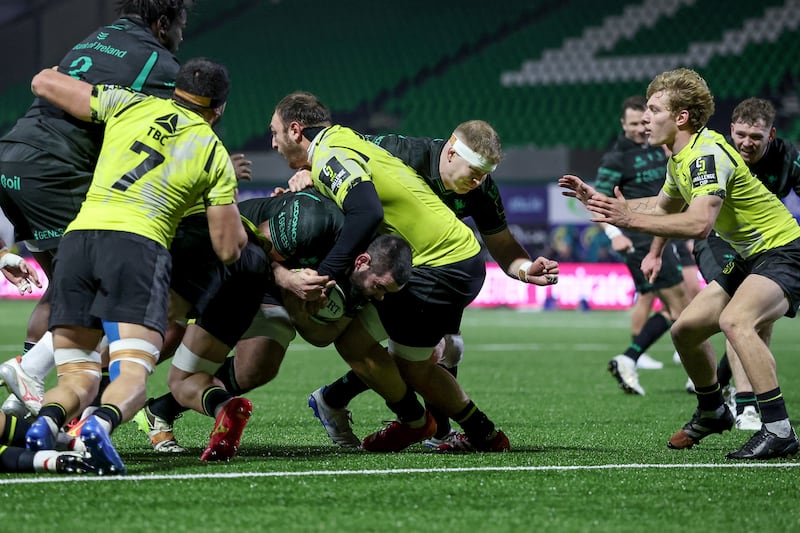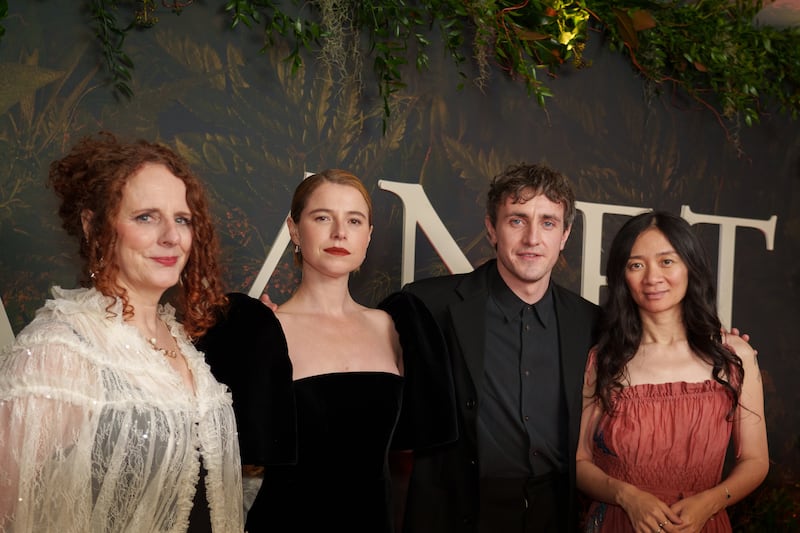In the past, Mark Francis 's paintings have drawn us into an inner world in which the microscopic is writ large in strange, compelling, often ominous images. For his new work in Calibrate at the Kerlin Gallery, he moves from the micro to the extreme macro. What unites micro and macro is his fascination with optical technologies that enable humans to see what is, within our everyday constraints, invisible. For Calibrate his sources are graphic representations of data from radio telescopes probing the furthest reaches of space. As ever, there is a brooding, mysterious quality to what we see.
Radio telescopes look beyond the visible to “see” astronomical objects and patterns in terms of the electromagnetic energy they emit at radio wavelengths. They were crucial in the discovery and understanding of quasars, one of the most distant and perplexing phenomena in the universe. Their properties and distribution have made them essential in developing a celestial grid on which to map the heavens.
Francis doesn’t represent quasars in an illustrative sense. In his new, as in his earlier work, the way he structures his compositions as grids evokes the way observations are correlated with theoretical underpinnings in a metaphorical way. Rather than being treated as isolated visual phenomena, they are pieces of bigger, coordinated theories about the way the world works, and ultimately about the nature of reality.
Incongruously, with their black, latticework grids and their luminous, rippling colours, his paintings unmistakably bring to mind, as well, the appearance of stained glass windows. The cathedrals they adorn, however, are the monumental bodies of knowledge painstakingly built up by untold numbers of researchers and the data and communications networks they employ.
From Newtownards, Co Down, Francis has been based in London since he went to study art at St Martin's and then the Chelsea School of Art, where he completed his MA in 1986. It was an interesting time to be a young art graduate in London. In 1988 Damien Hirst and fellow Goldsmiths College of Art students organised Freeze , the landmark group exhibition that put the Young British Artists on the map.
Francis wasn't among the 16 Freeze exhibitors and didn't become identified as a YBA as such, but he is of the same generation and became loosely associated with them through participation in a number of exhibitions, including the Royal Academy's controversial 1997 exhibition Sensation , featuring work from the Charles Saatchi collection. And while there is a conceptual emphasis to most of the work of the YBAs, Freeze included several painters whose work bears direct comparison with Francis's, notably Gary Hume and Fiona Rae.
Francis changed tack in the late 1980s. From paintings based on the landscape as such he turned to what might be called details of landscape: microscopic organisms. He has long collected scientific images and objects.
For an exhibition in Milton Keynes in 2000 he made an installation of some of this material: charts and illustrations dealing with fungi, insects, physiology and astronomy.
In his first microscopically inspired paintings he addressed the sources of life, with images of spores, sperm, ova and chromosomes, but over time he moved on to what seem very like pathogens - viruses, bacteria and fungi.
Clearly referencing scientific micrographs and diagrams, the images have a coldly objective, disturbingly pathological character, as though we are looking at something insidiously threatening. Often monochrome, or nearly so, their smeared, smooth surfaces recall the blurred photographic effect developed by Gerhard Richter and widely used by other artists.
While the imagery is substantially derived from electron micrographs, the underlying grid structures and patterns do refer to abstract painting, and also to the idea of ordered, systematic analysis in they way they resemble charts, maps and diagrams. All these concepts are seamlessly combined in the paintings, which can be seen as a means of representing aspects of the contemporary world. A world, that is, in which all of these things, including abstraction, the internet and the threat of pandemics form part of our reality.
Barry Phipps, a curator who focuses on the links between art and scientific research, has pointed out (of Francis’s earlier work) that his use of the grid does not conform to a conventional, map-like scheme. He leaves us in an indeterminate space rather than an identifiable place. Phipps relates it to the dynamic, shifting geography of the internet, “a geography made of networks and nodes that process information flows”. If you map the internet, your map will be “out of date the moment it appears”. Francis’s paintings are not maps of places as such, but an attempt to describe just such fluid realms of “networks and nodes”. They’re also beautiful to look at.
Calibrate: n ew paintings by Mark Francis. Kerlin Gallery, South Anne Street, Dublin. Until April 13, kerlin.ie





















